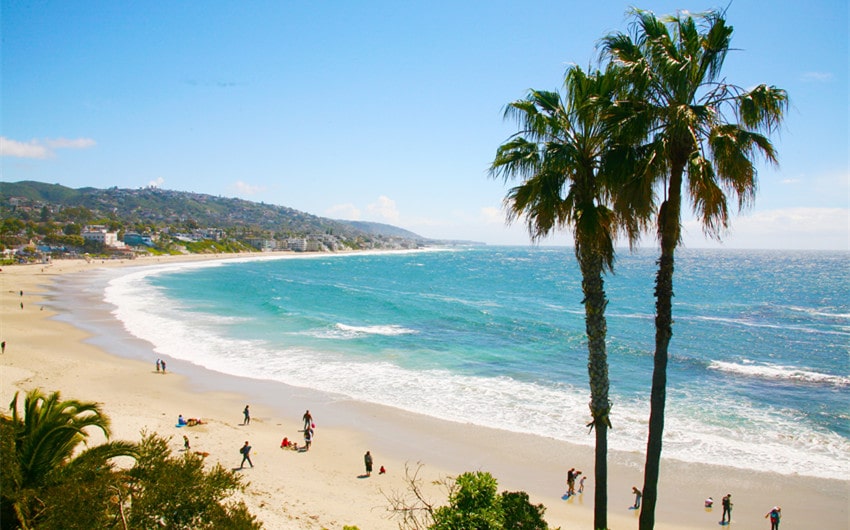6 Must-Know Highlights About What Is California Known For
California is more than just a state—it’s a symbol of dreams, innovation, and natural beauty. Whether you’re soaking up the sun on its iconic beaches or exploring the tech hubs of Silicon Valley, California offers something for everyone.
But what is California known for beyond its famous attractions? From its breathtaking landscapes to its cultural landmarks, California’s influence is felt across the globe. This article will take you on a journey through the many facets that make California a place like no other.
1. Natural Wonders
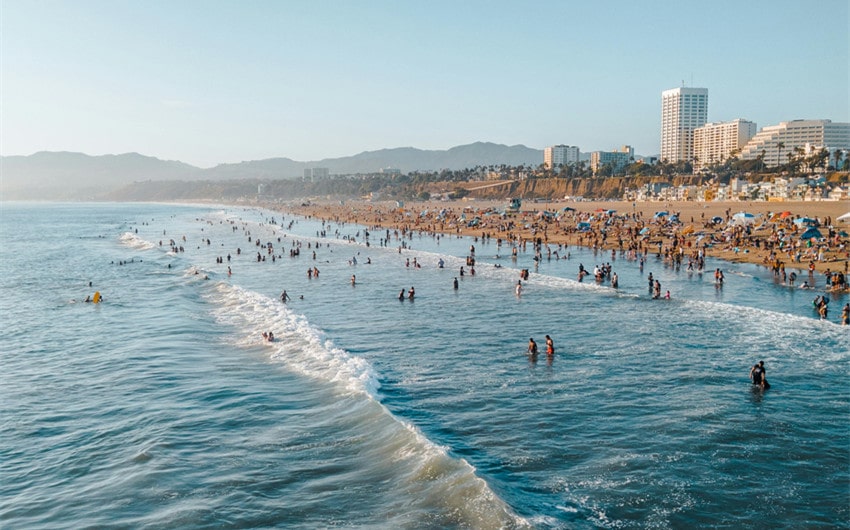
California’s natural beauty is one of its most defining features, drawing millions of visitors each year to experience its diverse landscapes. From stunning coastlines to majestic mountains, the state offers a variety of natural wonders that showcase the best of what the earth has to offer.
Beaches and Coastlines
California is home to some of the most iconic beaches in the world, making it a paradise for beach lovers. The Pacific Coastline stretches over 800 miles, offering a variety of beach experiences:
- Malibu: Known for its celebrity homes and pristine beaches, Malibu is a hotspot for surfing and sunbathing. The picturesque scenery, with its rolling waves and rugged cliffs, is perfect for a relaxing day by the ocean.
- Santa Monica: Famous for its vibrant pier and wide sandy beaches, Santa Monica is a family-friendly destination where you can enjoy the ocean, amusement park rides, and people-watching along the bustling boardwalk.
- Big Sur: One of the most dramatic stretches of coastline in the world, Big Sur offers breathtaking views where the mountains meet the sea. The rugged cliffs, towering redwoods, and secluded coves create a perfect backdrop for scenic drives and outdoor adventures.
National Parks
California’s national parks are a treasure trove of natural beauty, offering unique landscapes and ecosystems that are preserved for future generations to enjoy. Here are some of the most famous ones:
- Yosemite National Park: Renowned for its towering granite cliffs, giant sequoias, and cascading waterfalls, Yosemite is a must-visit for nature enthusiasts. Highlights include El Capitan, Half Dome, and the stunning Yosemite Valley.
- Sequoia National Park: Home to some of the largest trees on earth, Sequoia National Park is where you can stand in awe of the giant sequoias, including the famous General Sherman Tree. The park also offers diverse hiking trails and breathtaking mountain views.
- Joshua Tree National Park: Known for its unique Joshua trees and surreal desert landscape, this park is a favorite among photographers, hikers, and stargazers. The stark beauty of the desert, combined with its unusual rock formations, makes it a captivating destination.
Diverse Landscapes
One of California’s greatest strengths is its incredible variety of landscapes. No matter where you go, you’ll find something unique:
- Deserts: The Mojave and Colorado deserts offer expansive sand dunes, colorful rock formations, and an array of desert flora and fauna. The harsh beauty of these landscapes is both awe-inspiring and humbling.
- Forests: In addition to the giant sequoias, California is home to vast forests of pine, fir, and oak. The ancient redwoods of Northern California are particularly famous, with some trees standing over 350 feet tall and living for thousands of years.
- Mountains: The Sierra Nevada range is home to some of the highest peaks in the contiguous United States, including Mount Whitney. These mountains offer opportunities for hiking, skiing, and exploring alpine lakes, making them a year-round destination for outdoor enthusiasts.
2. Cultural Landmarks

California is not just a hub of natural beauty; it’s also a cultural powerhouse with landmarks that have shaped global culture, technology, and lifestyle. From the glitz and glamour of Hollywood to the cutting-edge innovations of Silicon Valley, California’s cultural landmarks are as diverse as they are influential.
Hollywood
Hollywood is synonymous with the global entertainment industry. As the birthplace of the movie business, Hollywood has a storied history that continues to influence the world of film and television. Key highlights include:
- Hollywood Sign: The iconic Hollywood Sign is a symbol recognized around the world. Perched on the hills overlooking Los Angeles, it represents the dreams and aspirations that Hollywood embodies.
- Walk of Fame: The Hollywood Walk of Fame celebrates stars of film, television, music, and more, with over 2,600 brass stars embedded in the sidewalks along Hollywood Boulevard. It’s a must-visit for any pop culture enthusiast.
- Studios and Theaters: Legendary studios like Universal, Warner Bros., and Paramount Pictures have produced countless classic films. Visitors can take studio tours to see where the magic happens, while historic theaters like the TCL Chinese Theatre host premieres and other star-studded events.
Silicon Valley
Silicon Valley, located in the southern part of the San Francisco Bay Area, is the epicenter of technological innovation. It’s where many of the world’s most influential tech companies and startups were born, and its impact is felt globally:
- Tech Giants: Companies like Apple, Google, Facebook (now Meta), and Tesla have headquarters in Silicon Valley. These companies have revolutionized how we live, work, and communicate, making the region a beacon of innovation.
- Stanford University: Stanford University is not just an educational institution; it’s a breeding ground for tech innovation. Many of Silicon Valley’s biggest names have roots in Stanford, where research and development continue to push the boundaries of technology.
- Start-Up Culture: Silicon Valley is known for its start-up culture, where new ideas and entrepreneurial spirit thrive. The region’s unique ecosystem, including venture capital and a network of mentors, has made it a launchpad for many successful businesses.
Cultural Diversity
California is one of the most culturally diverse states in the U.S., and this diversity is reflected in its cultural landmarks:
- San Francisco’s Chinatown: San Francisco is home to one of the oldest and most famous Chinatowns in North America. Visitors can explore traditional Chinese architecture, temples, and markets, experiencing a rich cultural heritage in the heart of the city.
- Los Angeles’ Little Tokyo and Koreatown: Los Angeles is home to vibrant ethnic enclaves like Little Tokyo and Koreatown, where you can immerse yourself in Japanese and Korean culture, respectively. These neighborhoods are known for their authentic cuisine, cultural festivals, and unique shopping experiences.
- Mission San Juan Capistrano: One of the historic Spanish missions in California, Mission San Juan Capistrano, offers a glimpse into the state’s colonial past. The mission is known for its beautiful architecture and the annual return of the swallows, a phenomenon that draws visitors from around the world.
3. Lifestyle and Trends

California has long been a trendsetter, influencing not just the rest of the United States but the entire world. The state’s unique lifestyle, shaped by its climate, diverse population, and innovative spirit, has given rise to various trends that have become ingrained in popular culture. Whether it’s in health and wellness, surf culture, or fashion, California’s impact is far-reaching.
Health and Wellness
California is often seen as the epicenter of the health and wellness movement, a place where people embrace a lifestyle that prioritizes physical and mental well-being. This focus on health has led to several trends that have gained popularity worldwide:
- Yoga and Meditation: California has played a significant role in the popularization of yoga and meditation in the West. Cities like Los Angeles and San Francisco are home to countless yoga studios and wellness centers that offer everything from traditional practices to modern interpretations. The emphasis on mindfulness and inner peace has resonated globally, with California at the forefront of this movement.
- Organic and Plant-Based Diets: The farm-to-table movement, which promotes the consumption of fresh, locally-sourced food, took root in California and has since spread across the country. Additionally, California is a leader in the promotion of organic and plant-based diets. The state’s agriculture industry, particularly in areas like the Central Valley, supplies a significant portion of the nation’s organic produce, making healthy eating accessible and trendy.
- Fitness Culture: From outdoor activities to fitness fads, California is a place where staying active is part of daily life. The mild climate allows for year-round outdoor exercise, whether it’s running along the beach, hiking in the mountains, or cycling through city streets. The state is also home to innovative fitness trends, including the rise of boutique fitness studios offering specialized classes like spin, barre, and HIIT (high-intensity interval training).
Surf Culture
California is synonymous with surf culture, a lifestyle that embodies the laid-back, sun-soaked spirit of the state. The state’s extensive coastline, consistent waves, and mild weather have made it a global surf destination:
- History of Surfing: Surfing in California dates back to the early 20th century, and it has since become a defining aspect of the state’s identity. Locations like Huntington Beach, known as “Surf City USA,” and Malibu have become iconic surfing spots that attract surfers from around the world.
- Influence on Music and Fashion: Surf culture has influenced various aspects of pop culture, particularly music and fashion. The surf rock genre, popularized by bands like The Beach Boys, captured the carefree vibe of California’s beach life and brought it to the mainstream. Similarly, surf fashion, characterized by brands like Quiksilver and Billabong, has become a staple in casual wear, with its influence seen in board shorts, flip-flops, and beachwear.
- Surf Competitions and Events: California hosts some of the most prestigious surf competitions in the world, including the Vans US Open of Surfing in Huntington Beach and the Mavericks big-wave contest near Half Moon Bay. These events draw top surfers and enthusiasts alike, further solidifying California’s status as a global surfing hub.
Fashion and Innovation
California’s influence on fashion and lifestyle trends is undeniable. The state is a melting pot of creativity, where fashion meets innovation and casual meets chic:
- Casual and Effortless Style: The California lifestyle is often associated with a laid-back, effortless style. Think jeans, t-shirts, and sneakers—a uniform that reflects the state’s casual yet stylish approach to fashion. The “California cool” aesthetic has become a global trend, influencing everyday fashion with its relaxed vibe.
- Sustainable Fashion: California is also a leader in the sustainable fashion movement. Brands based in the state, like Patagonia and Reformation, prioritize environmentally-friendly practices, from using recycled materials to promoting fair labor. The state’s emphasis on sustainability extends to fashion, encouraging consumers to make conscious choices about what they wear.
- Tech and Wearable Fashion: In Silicon Valley, where technology and fashion intersect, the concept of wearable tech has taken off. Companies are creating innovative products that blend fashion with functionality, from smartwatches to fitness trackers. The integration of technology into everyday clothing and accessories is a growing trend, with California leading the way.
4. Historical Significance
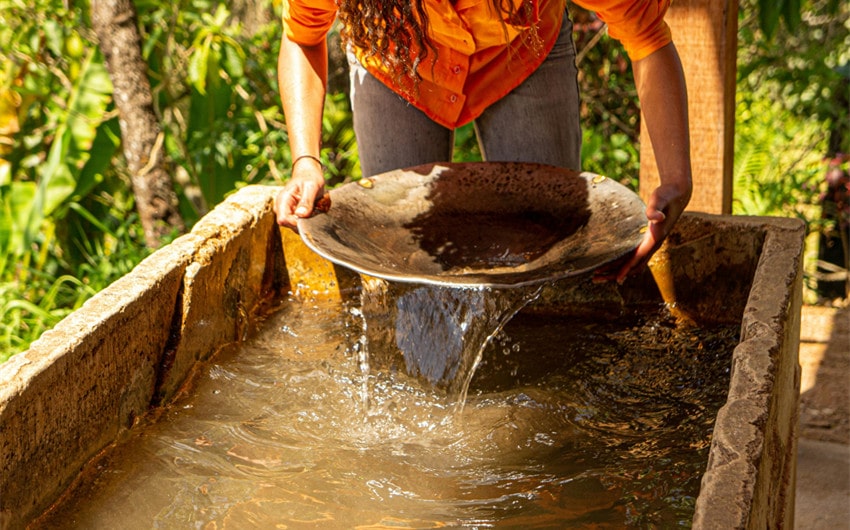
California’s rich history is a tapestry of events and influences that have shaped not only the state but also the nation. From the transformative impact of the Gold Rush to its role as a cultural melting pot, California’s historical significance is reflected in its diverse heritage, economic growth, and enduring cultural influence. Understanding this history provides a deeper appreciation of what makes California such a unique and influential state.
The Gold Rush
The California Gold Rush of 1848-1855 was a defining moment in both the state’s and the nation’s history. It was a period of rapid change, bringing an influx of people, wealth, and development that permanently altered the landscape of California:
- Discovery at Sutter’s Mill: The Gold Rush began in 1848 when gold was discovered at Sutter’s Mill in Coloma, California. News of the discovery spread quickly, leading to a massive migration of fortune seekers, known as “Forty-Niners,” from all over the world.
- Population Boom: The Gold Rush brought a diverse population to California, including immigrants from Latin America, Europe, Asia, and other parts of the United States. This sudden population boom turned California into a melting pot of cultures and led to its rapid admission as the 31st state in 1850.
- Economic Transformation: The Gold Rush had a profound economic impact, driving infrastructure development, including roads, railroads, and cities. San Francisco, for instance, grew from a small settlement to a booming city almost overnight, becoming a major port and financial hub.
- Lasting Legacy: The Gold Rush also had lasting environmental and social consequences. While it spurred economic growth, it also led to significant displacement of Native American populations and environmental degradation from mining activities. Nonetheless, the Gold Rush remains a pivotal chapter in California’s history, symbolizing the spirit of adventure and opportunity that still defines the state.
Cultural Diversity
California’s history is deeply intertwined with the stories of the many diverse cultures that have made the state their home. This cultural richness is a cornerstone of California’s identity:
- Indigenous Peoples: Long before European settlers arrived, California was home to a large and diverse population of Indigenous peoples. Tribes such as the Chumash, Pomo, and Miwok thrived in the region, developing complex societies and rich cultural traditions. Although their numbers were dramatically reduced due to colonization, their influence remains an important part of California’s cultural fabric.
- Spanish and Mexican Influence: California was part of Spain’s colonial empire and later Mexico before becoming part of the United States. This Spanish and Mexican heritage is evident in the state’s architecture, place names, and cultural practices, particularly in the missions that dot the state and the celebration of events like Cinco de Mayo.
- Asian Immigration: California has long been a gateway for Asian immigrants, particularly Chinese, Japanese, Filipino, and more recently, Vietnamese, and Korean communities. These groups have played a significant role in the state’s history, contributing to its economy, culture, and social fabric. The construction of the Transcontinental Railroad by Chinese laborers is one of the most notable contributions, while Japantowns and Chinatowns in cities like San Francisco and Los Angeles remain vibrant cultural centers.
- African American History: African Americans have also played a vital role in California’s history, particularly during the Great Migration when many moved to California for better opportunities. The state was a center for the Civil Rights Movement on the West Coast, with significant contributions from leaders like Dr. Martin Luther King Jr. and the establishment of the Black Panther Party in Oakland. African American culture continues to thrive in California, particularly in the realms of music, arts, and activism.
The Growth of the Entertainment Industry
California’s role as the center of the global entertainment industry has roots that go back to the early 20th century:
- The Rise of Hollywood: Hollywood became the heart of the film industry in the 1910s due to its ideal climate, varied landscapes, and distance from the patent restrictions on filmmaking enforced in the Eastern U.S. Studios like Universal, Paramount, and Warner Bros. were established during this time, laying the foundation for what would become a multibillion-dollar industry.
- Impact of Television: The mid-20th century saw the rise of television, with California once again at the forefront. Los Angeles became the epicenter of TV production, hosting the headquarters of major networks and producing countless iconic shows that defined American culture.
- Music and Arts: In addition to film and television, California has also been a major hub for the music industry. The state has produced or hosted some of the most influential artists and bands across genres, from the psychedelic rock of the 1960s to the rap and hip-hop scenes that emerged in the 1980s and 1990s. California’s cultural impact extends beyond entertainment into other art forms, including literature, visual arts, and fashion, often setting trends that reverberate globally.
Technological Innovation
California’s history is also marked by its role as a leader in technological innovation, particularly in the latter half of the 20th century and into the 21st century:
- The Birth of Silicon Valley: The region now known as Silicon Valley began its transformation in the 1950s and 1960s with the development of semiconductor technology. The area’s growth accelerated with the rise of the personal computer industry in the 1970s and 1980s, led by companies like Apple and Intel.
- The Internet and Beyond: The 1990s saw the advent of the internet, with Silicon Valley companies at the forefront. Today, the region is home to tech giants like Google, Facebook (Meta), and Tesla, continuing California’s legacy as a center of technological advancement. The impact of these companies on global communication, commerce, and culture cannot be overstated.
- Space Exploration: California also has a long history of involvement in the aerospace industry, dating back to the early 20th century. Companies like SpaceX, headquartered in Hawthorne, are now pushing the boundaries of space exploration, continuing the state’s tradition of innovation and discovery.
5. Food and Cuisine
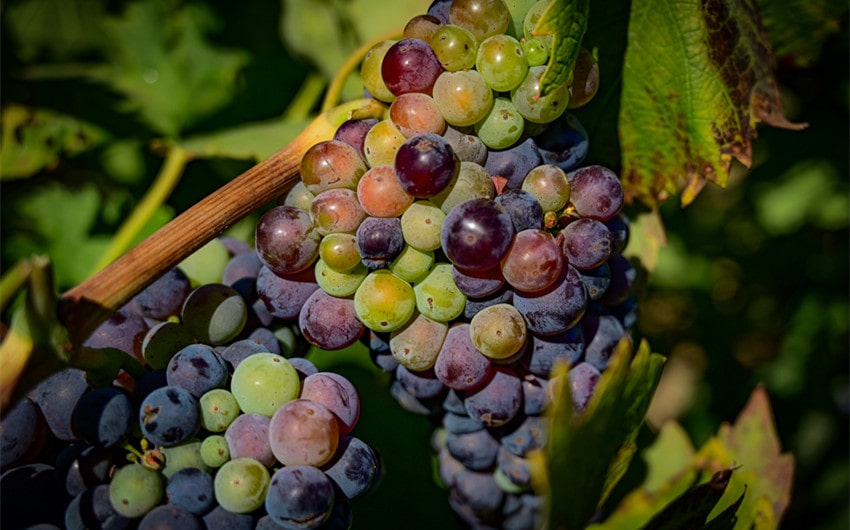
California’s food scene is as diverse and vibrant as the state itself, reflecting its rich cultural heritage, innovative spirit, and abundant agricultural resources. Known for pioneering culinary trends that have spread across the globe, California’s cuisine is a fusion of flavors, ingredients, and traditions. Whether you’re indulging in fresh, farm-to-table fare, sipping on world-renowned wines, or enjoying iconic local dishes, California offers a culinary experience like no other.
Farm-to-Table Movement
California is the birthplace of the farm-to-table movement, a culinary philosophy that emphasizes the importance of fresh, locally sourced ingredients. This movement has revolutionized the way people think about food, placing a strong emphasis on sustainability, seasonality, and supporting local farmers:
- Origins of the Movement: The farm-to-table movement gained traction in the 1970s, with chefs like Alice Waters of Chez Panisse in Berkeley leading the charge. Waters and other pioneering chefs sought to create dishes that highlighted the natural flavors of locally grown, organic produce, thereby reducing the environmental impact of long-distance food transportation and promoting a healthier way of eating.
- Sustainable Agriculture: California’s vast and fertile Central Valley is one of the most productive agricultural regions in the world, producing a significant portion of the country’s fruits, vegetables, and nuts. This abundance of fresh produce makes it easier for restaurants and consumers to embrace the farm-to-table philosophy. Farmers’ markets are a common sight across the state, allowing people to purchase fresh, seasonal produce directly from the source.
- Culinary Innovation: The farm-to-table movement has inspired a wave of culinary innovation in California. Chefs experiment with organic ingredients, heirloom varieties, and artisanal products to create dishes that are both delicious and environmentally conscious. This focus on quality and sustainability has influenced dining trends across the United States and beyond, making California a leader in the global food scene.
Iconic Foods
California is home to a variety of iconic foods that have become synonymous with the state’s culinary identity. These dishes and ingredients reflect the state’s diverse cultural influences and its emphasis on fresh, flavorful fare:
- Avocados: California is the largest producer of avocados in the United States, and the fruit has become a staple in the state’s cuisine. Whether spread on toast, blended into guacamole, or added to salads and sandwiches, avocados are a beloved ingredient that epitomizes California’s focus on fresh, healthy eating.
- Fish Tacos: Originating from the coastal regions of Baja California and popularized in San Diego, fish tacos are a quintessential California dish. Typically made with grilled or fried fish, cabbage, salsa, and a squeeze of lime, these tacos are a perfect example of the state’s love for fresh, flavorful, and casual food.
- Sourdough Bread: San Francisco is famous for its sourdough bread, a tangy, chewy loaf that has been a local favorite since the Gold Rush era. The city’s unique foggy climate contributes to the distinct flavor of the bread, which is made using a naturally fermented starter. Sourdough is a staple in many Bay Area restaurants and is often used as a base for dishes like clam chowder in a bread bowl.
- California Roll: The California roll is a sushi creation that embodies the state’s innovative approach to cuisine. Invented in Los Angeles in the 1970s, this roll typically features imitation crab, avocado, and cucumber, often wrapped in seaweed and rice with the rice on the outside. The California roll has become one of the most popular types of sushi in the United States, helping to introduce sushi to a broader audience.
Wine Country
California’s Wine Country, particularly the regions of Napa Valley and Sonoma County, is renowned worldwide for producing some of the finest wines. The state’s favorable climate and diverse terroirs make it an ideal location for viticulture, and its wines are celebrated for their quality and variety:
- Napa Valley: Napa Valley is one of the most famous wine regions in the world, known for its premium Cabernet Sauvignon and Chardonnay. The region’s picturesque vineyards, luxury wineries, and Michelin-starred restaurants make it a top destination for wine lovers. Napa’s wine industry has set the standard for quality wine production in the United States, and its influence extends globally.
- Sonoma County: Just west of Napa, Sonoma County offers a more laid-back wine experience but is equally revered for its wines. The region is known for its Pinot Noir, Zinfandel, and sparkling wines, among others. Sonoma’s wineries are often family-owned, and the region’s emphasis on sustainable farming practices aligns with California’s broader commitment to environmental stewardship.
- Wine Tasting and Tours: Wine tourism is a significant part of California’s appeal. Visitors can explore the scenic vineyards, participate in wine tastings, and learn about the winemaking process from grape to glass. Events like the Napa Valley Wine Auction and the Sonoma County Harvest Fair celebrate the region’s rich wine heritage, attracting enthusiasts from around the world.
Fusion Cuisine
California is a melting pot of cultures, and this diversity is reflected in its food. The state is known for its fusion cuisine, which blends elements from different culinary traditions to create new, exciting flavors:
- Mexican-Asian Fusion: California’s large Mexican and Asian populations have given rise to creative fusion dishes that combine the best of both worlds. Korean tacos, which feature marinated Korean BBQ beef (bulgogi) wrapped in a corn tortilla and topped with traditional Mexican salsas, are a prime example of this innovative approach to food.
- California-Italian Cuisine: The state’s abundance of fresh produce and seafood has influenced Italian cuisine in California, leading to a lighter, more vegetable-forward interpretation of traditional dishes. California-Italian cuisine often features dishes like wood-fired pizzas topped with seasonal vegetables, fresh seafood pastas, and salads with locally sourced greens and herbs.
- Sushi Burritos and Poke Bowls: The sushi burrito, which wraps sushi ingredients in a large seaweed sheet like a burrito, and poke bowls, which feature raw fish over rice with various toppings, are examples of fusion cuisine that have gained popularity in California and beyond. These dishes reflect the state’s penchant for combining healthy, fresh ingredients in convenient, portable formats.
Famous Food Markets
California is home to some of the most vibrant and diverse food markets in the country, where you can sample a wide range of flavors and products that reflect the state’s culinary diversity:
- Ferry Building Marketplace (San Francisco): Located along the waterfront, the Ferry Building Marketplace is a food lover’s paradise. The market features a variety of artisanal vendors offering everything from fresh oysters to gourmet chocolates. It’s also home to several renowned restaurants and cafes, making it a must-visit for anyone interested in California’s culinary scene.
- Grand Central Market (Los Angeles): Since 1917, Grand Central Market has been a hub of culinary culture in downtown Los Angeles. The market offers a mix of old and new, with traditional vendors selling spices and produce alongside trendy food stalls serving everything from gourmet burgers to Asian street food. It’s a reflection of the city’s diverse culinary landscape and a favorite spot for food enthusiasts.
- Santa Monica Farmers Market: The Santa Monica Farmers Market is one of the largest and most famous in California. It’s a place where chefs, locals, and tourists alike come to shop for fresh, seasonal produce. The market is known for its high-quality fruits and vegetables, often supplied to top restaurants in the area, and it plays a key role in promoting the farm-to-table movement.
6. Entertainment and Arts
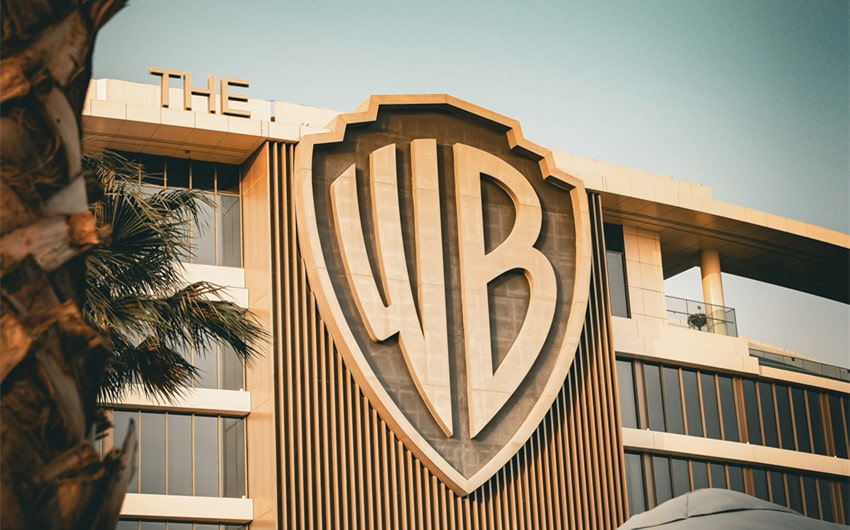
California is widely recognized as a global hub for entertainment and the arts, with a rich history of cultural production that has influenced music, film, television, and visual arts worldwide. From the glitz and glamour of Hollywood to the dynamic music scenes of Los Angeles and San Francisco, the state has nurtured countless artists, musicians, filmmakers, and creatives who have left an indelible mark on the cultural landscape.
Film and Television
When it comes to film and television, California is synonymous with Hollywood, the epicenter of the global entertainment industry. The state’s influence in this realm is unparalleled, with a long legacy of iconic films, groundbreaking television shows, and legendary studios:
- The Birth of Hollywood: Hollywood’s rise to prominence began in the early 20th century, when filmmakers moved to California to escape the strict patents held by Thomas Edison on motion picture technology. The region’s sunny weather, varied landscapes, and distance from the East Coast made it an ideal location for filmmaking. By the 1920s, Hollywood had become the movie capital of the world, producing silent films that captivated audiences globally.
- Iconic Studios: California is home to some of the most famous film studios in the world, including Universal Studios, Warner Bros., Paramount Pictures, and 20th Century Fox (now part of Disney). These studios have produced countless classic films, from early silent movies to modern blockbusters, shaping the global film industry. The backlots and soundstages of these studios have served as the setting for everything from epic historical dramas to cutting-edge science fiction.
- Television’s Golden Age: The post-World War II era saw the rise of television as a dominant medium, and California was at the forefront. Los Angeles became the center of TV production, hosting the headquarters of major networks like ABC, CBS, and NBC. Iconic shows such as “I Love Lucy,” “The Twilight Zone,” and “Friends” were produced in California, setting trends and influencing popular culture for generations. Today, the state continues to be a major player in TV production, with streaming services like Netflix and Hulu headquartered in Los Angeles, producing original content that reaches a global audience.
- Awards and Festivals: California hosts some of the most prestigious awards and film festivals in the world, including the Academy Awards (Oscars) in Los Angeles, the Sundance Film Festival (held in Utah but closely tied to Hollywood), and the Los Angeles Film Festival. These events celebrate the best in film and television, attracting industry professionals, celebrities, and fans from around the world.
Music Scene
California’s music scene is diverse, dynamic, and influential, spanning multiple genres and decades. From the surf rock of the 1960s to the hip-hop revolution of the 1990s, California has been at the forefront of musical innovation:
- The Birth of Surf Rock: The 1960s saw the rise of surf rock, a genre that epitomized California’s beach culture. Bands like The Beach Boys became synonymous with the carefree, sun-soaked lifestyle of Southern California, producing hits like “Surfin’ USA” and “Good Vibrations.” This genre not only defined a generation but also solidified California’s image as a land of endless summer and youthful exuberance.
- The Psychedelic Era: San Francisco played a central role in the counterculture movement of the 1960s, with its vibrant music scene becoming a haven for artists and musicians experimenting with new sounds and ideas. The city’s Haight-Ashbury district was the epicenter of the psychedelic rock movement, with bands like Jefferson Airplane, The Grateful Dead, and Janis Joplin defining the sound of an era. The iconic Monterey Pop Festival in 1967 and the Woodstock-inspired Altamont Free Concert in 1969 further cemented California’s role in the music revolution.
- Hip-Hop and Rap: The 1980s and 1990s saw the rise of West Coast hip-hop, with Los Angeles becoming a major center for the genre. Pioneering artists like Dr. Dre, Tupac Shakur, Snoop Dogg, and N.W.A. emerged from the streets of Compton and other parts of Los Angeles, creating a distinct sound that addressed social issues, cultural identity, and life in the inner city. The West Coast’s G-funk sound, characterized by smooth, funky beats and laid-back rhythms, became a defining feature of 1990s rap music, influencing artists and producers worldwide.
- Music Festivals and Venues: California is home to some of the most famous music festivals and concert venues in the world. Coachella, held annually in the Coachella Valley, is one of the largest and most influential music festivals, drawing top artists and music lovers from around the globe. The Hollywood Bowl, an iconic outdoor amphitheater in Los Angeles, has hosted performances by everyone from The Beatles to Billie Eilish, while venues like The Fillmore in San Francisco continue to be legendary spots for live music.
Visual Arts
California has also been a major center for the visual arts, with a rich history of innovation in painting, sculpture, photography, and contemporary art. The state’s diverse cultural influences and natural beauty have inspired countless artists:
- The California Impressionists: In the late 19th and early 20th centuries, California’s landscapes inspired a group of artists known as the California Impressionists. These painters, including Guy Rose, Granville Redmond, and William Wendt, were influenced by the French Impressionists but developed their own unique style, characterized by vibrant colors and loose brushwork that captured the golden light and natural beauty of the state.
- The Modern Art Movement: Mid-20th century California became a hotbed for modern and contemporary art, with movements like Abstract Expressionism, Pop Art, and Minimalism gaining traction in the state. Los Angeles, in particular, emerged as a major center for contemporary art, with artists like Ed Ruscha, David Hockney, and John Baldessari leading the way. The city’s thriving gallery scene and institutions like the Los Angeles County Museum of Art (LACMA) and the Museum of Contemporary Art (MOCA) have helped solidify its reputation as a global art hub.
- Street Art and Public Murals: California’s cities, especially Los Angeles and San Francisco, are known for their vibrant street art and public murals, which have become integral parts of the urban landscape. The Mission District in San Francisco is famous for its colorful murals that depict social and political themes, while Los Angeles has been home to influential street artists like Shepard Fairey and Retna. The state’s commitment to public art ensures that creativity is accessible to all, with murals and installations adding color and meaning to urban spaces.
Festivals and Events
California’s cultural calendar is packed with festivals and events that celebrate the state’s rich artistic heritage and vibrant creative community. These gatherings attract artists, performers, and audiences from around the world, reinforcing California’s status as a cultural powerhouse:
- Coachella Valley Music and Arts Festival: Coachella is more than just a music festival; it’s a cultural phenomenon. Held in the desert of Indio, California, this annual event features performances by some of the biggest names in music, along with large-scale art installations, sculptures, and immersive experiences. Coachella has become a trendsetting event, influencing everything from music and fashion to art and technology.
- Sundance Film Festival: Although technically held in Utah, the Sundance Film Festival has strong ties to California, particularly through its connection to the Hollywood film industry. Sundance is the premier festival for independent films, showcasing new talent and innovative storytelling. Many of the films and filmmakers featured at Sundance go on to achieve critical acclaim and commercial success, often with the support of California-based studios and distributors.
- Burning Man: Burning Man, held in the Nevada desert, is another event with deep connections to California’s creative community. This annual gathering, which celebrates radical self-expression, art, and community, draws thousands of participants, many of whom are artists, performers, and tech innovators from California. The event’s ethos of creativity, sustainability, and collaboration has influenced numerous art and cultural movements, particularly in the San Francisco Bay Area.
- LA Art Show: The LA Art Show is one of the largest and most prestigious art fairs in the United States, attracting galleries, collectors, and artists from around the world. The event showcases a wide range of works, from contemporary and modern art to classical and traditional pieces, reflecting the diverse and dynamic nature of the global art market.

